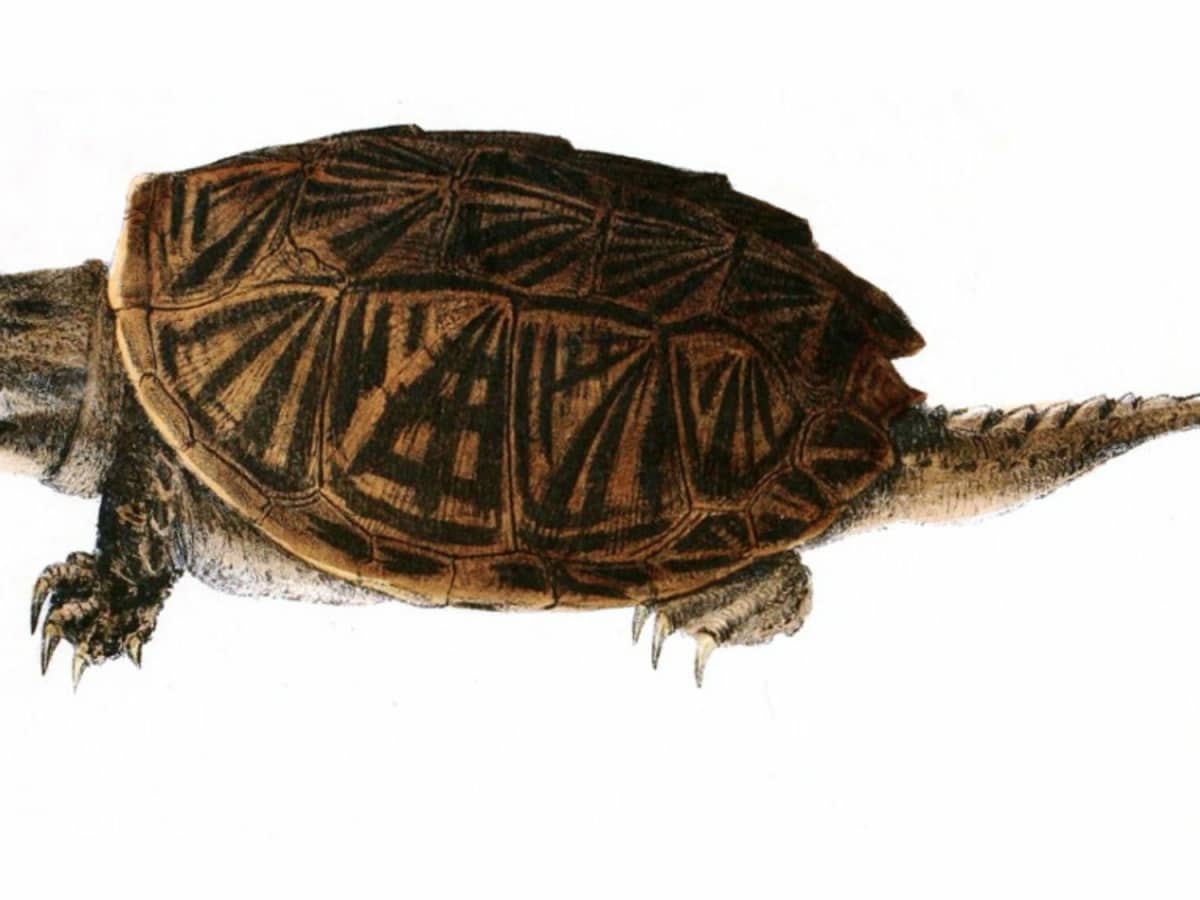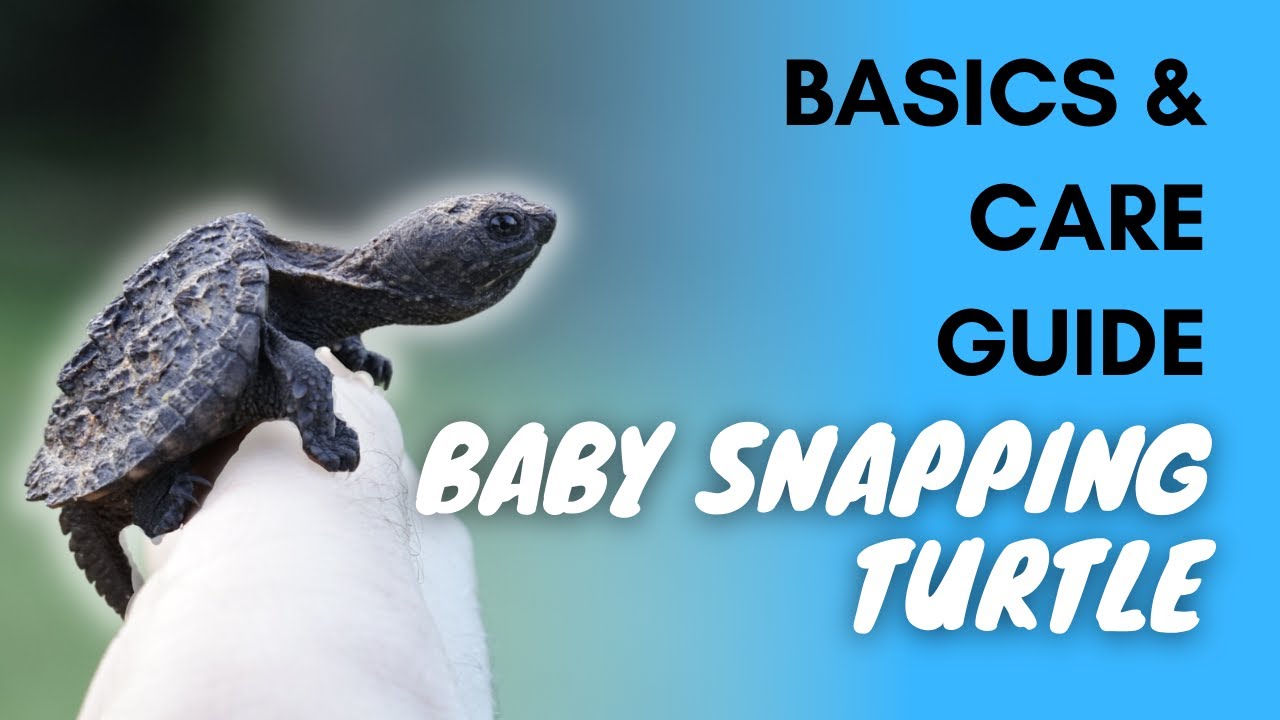To care for a baby snapping turtle, provide a proper tank setup and temperature control. Offer a varied diet of insects, worms, and aquatic plants to meet their nutritional needs.
Baby snapping turtles require clean water for swimming and basking areas for drying off. Ensure the tank has a UVB light for proper shell development and calcium absorption. Regularly clean the tank and monitor the turtle’s health for any signs of illness.
By following these care guidelines, you can help your baby snapping turtle thrive in captivity.

Credit: pethelpful.com
Setting Up The Habitat
Setting up the habitat for your baby snapping turtle is crucial for its health and well-being. Creating a suitable environment that mimics its natural habitat is essential for the turtle’s growth and development. In this guide, we will explore the key steps in setting up the perfect habitat for your baby snapping turtle.
Choosing The Right Enclosure
When choosing an enclosure for your baby snapping turtle, opt for a spacious tank that provides ample room for swimming and basking. A 20-gallon tank is a good starting point for a baby snapping turtle, but as it grows, you will need to upgrade to a larger tank to accommodate its increasing size. Ensure that the tank has a secure lid to prevent the turtle from escaping and to maintain the required humidity levels.
Creating A Proper Basking Area
A proper basking area is essential for your baby snapping turtle’s well-being. Use a basking platform or dock that allows the turtle to climb out of the water to bask under a heat lamp. Position the basking area under the heat lamp to provide the turtle with a temperature of around 85-90°F. Additionally, include a UVB lamp to mimic natural sunlight, aiding in the turtle’s calcium absorption and overall health.
Feeding The Baby Snapping Turtle
Feeding a baby snapping turtle can be a bit tricky as it requires a proper diet and feeding schedule. In this section, we will discuss the ideal diet and feeding schedule for a baby snapping turtle to help you take care of your pet.
Ideal Diet For Baby Snapping Turtles
A baby snapping turtle’s diet should include a variety of protein-rich foods, such as insects, worms, small fish, and shrimp. They also need to be given some vegetation, including aquatic plants, leafy greens, and fruits. This combination of food will help provide the necessary nutrients for your baby snapping turtle to grow and stay healthy.
It is essential to avoid feeding your baby snapping turtle processed or packaged foods as these can be harmful to their health. Also, avoid feeding them meat that is high in fat and sodium, like beef or pork, as this can cause health issues for your turtle.
Feeding Schedule
The feeding schedule for a baby snapping turtle depends on its age. For newborn turtles, feeding should be done daily or every other day, while older turtles can be fed every two to three days. It is essential to feed them small portions of food that they can consume in 15 to 20 minutes.
When feeding your baby snapping turtle, make sure to remove any uneaten food promptly. Any leftover food can contaminate the water and harm your turtle’s health.
Conclusion
In conclusion, feeding a baby snapping turtle requires a balanced diet and a proper feeding schedule. Providing the ideal diet and following a feeding schedule can help your baby snapping turtle grow and stay healthy. Avoid feeding them processed or packaged foods and remove any uneaten food promptly.
Handling And Interaction
Baby snapping turtles require careful handling and interaction to ensure their well-being and safety. It is important to understand the safety measures when handling these tiny creatures and the benefits of interaction for their growth and development.
Safety Measures When Handling
When handling baby snapping turtles, it is crucial to prioritize safety for both the turtle and the handler. Here are some safety measures to keep in mind:
- Wash Hands: Always wash your hands thoroughly before and after handling the turtle to prevent the spread of bacteria.
- Gentle Touch: Handle the turtle gently and avoid any sudden movements to prevent stress or injury.
- Support the Shell: When picking up the turtle, support its shell to prevent any damage to its delicate structure.
- Avoid Overhandling: Limit handling time to reduce stress on the turtle and allow it to rest.
- Secure Enclosure: Ensure that the turtle is kept in a secure enclosure to prevent escapes and potential harm.
Benefits Of Interaction
Interaction with baby snapping turtles can have several benefits for their well-being and development. Here are some of the advantages of engaging with these fascinating creatures:
- Behavioral Stimulation: Interaction provides behavioral stimulation for the turtle, promoting natural behaviors and mental engagement.
- Socialization: Regular interaction can help the turtle become more accustomed to human presence, reducing stress in the long run.
- Health Monitoring: Through interaction, you can closely monitor the turtle’s health and behavior, allowing for early detection of any issues.
- Learning Opportunity: For caretakers, interaction with the turtle provides a learning opportunity to understand their behavior and needs better.
Health And Wellness
When it comes to caring for a baby snapping turtle, ensuring their health and wellness is crucial. By being attentive to signs of illness and providing regular health check-ups, you can help your pet thrive. In this section, we will discuss the key aspects of maintaining the health and wellness of your baby snapping turtle.
Signs Of Illness To Watch For
It’s essential to be vigilant for any signs of illness in your baby snapping turtle. Here are some common indicators of health issues:
- Abnormal lethargy or lack of activity
- Loss of appetite or refusal to eat
- Unusual changes in behavior or movement
- Shell abnormalities or discoloration
- Excessive basking or hiding
Regular Health Check-ups
Regular health check-ups are necessary to ensure the well-being of your baby snapping turtle. Schedule appointments with a reptile veterinarian for comprehensive examinations, including:
- Physical assessment of the turtle’s overall condition
- Checking for parasites or infections
- Assessment of the shell and skin health
- Discussion of dietary and environmental needs
Growth And Development
Understanding the growth and development of your baby snapping turtle is crucial to providing the best care possible. As a responsible turtle owner, it’s essential to be aware of the various growth stages and know how to encourage healthy development.
Understanding Growth Stages
As baby snapping turtles grow, they go through several distinct stages. Initially, they start as hatchlings, emerging from their eggs. After this, they progress through the juvenile stage, where they begin to develop their distinctive features and behaviors. Finally, they reach adulthood, where they are fully grown and can reproduce.
Encouraging Healthy Development
Ensuring the healthy development of your baby snapping turtle involves providing a suitable habitat, proper nutrition, and regular monitoring. Maintaining a clean and spacious tank is essential for their physical and mental well-being. Additionally, offering a balanced diet of small fish, insects, and leafy greens supports their growth and overall health.

Credit: pethelpful.com
Socialization And Enrichment
When caring for a baby snapping turtle, it’s essential to focus on their socialization and enrichment. These aspects play a crucial role in the overall well-being and development of your pet. By understanding the importance of socializing and incorporating enrichment activities, you can ensure that your baby snapping turtle thrives in its environment.
Importance Of Socializing
Socializing is a vital aspect of caring for a baby snapping turtle. It involves exposing the turtle to different environments, interactions with humans, and other turtles. This helps them develop healthy behaviors and become more adaptable to various situations. Socializing also reduces stress and fear, promoting a positive temperament in the turtle.
Enrichment Activities
Implementing enrichment activities in your baby snapping turtle’s routine is essential for their mental and physical stimulation. This can include providing a variety of natural habitats, such as rocks, plants, and hiding spots, within their enclosure. Additionally, introducing interactive toys and objects for the turtle to explore can enhance their overall well-being.

Credit: m.youtube.com
Conclusion
Caring for a baby snapping turtle requires patience, knowledge, and dedication. By providing a suitable habitat, proper diet, and regular monitoring, you can ensure the well-being of your tiny reptilian companion. Remember, each turtle is unique, so observe their behaviors closely for optimal care and companionship.






Leave a Reply